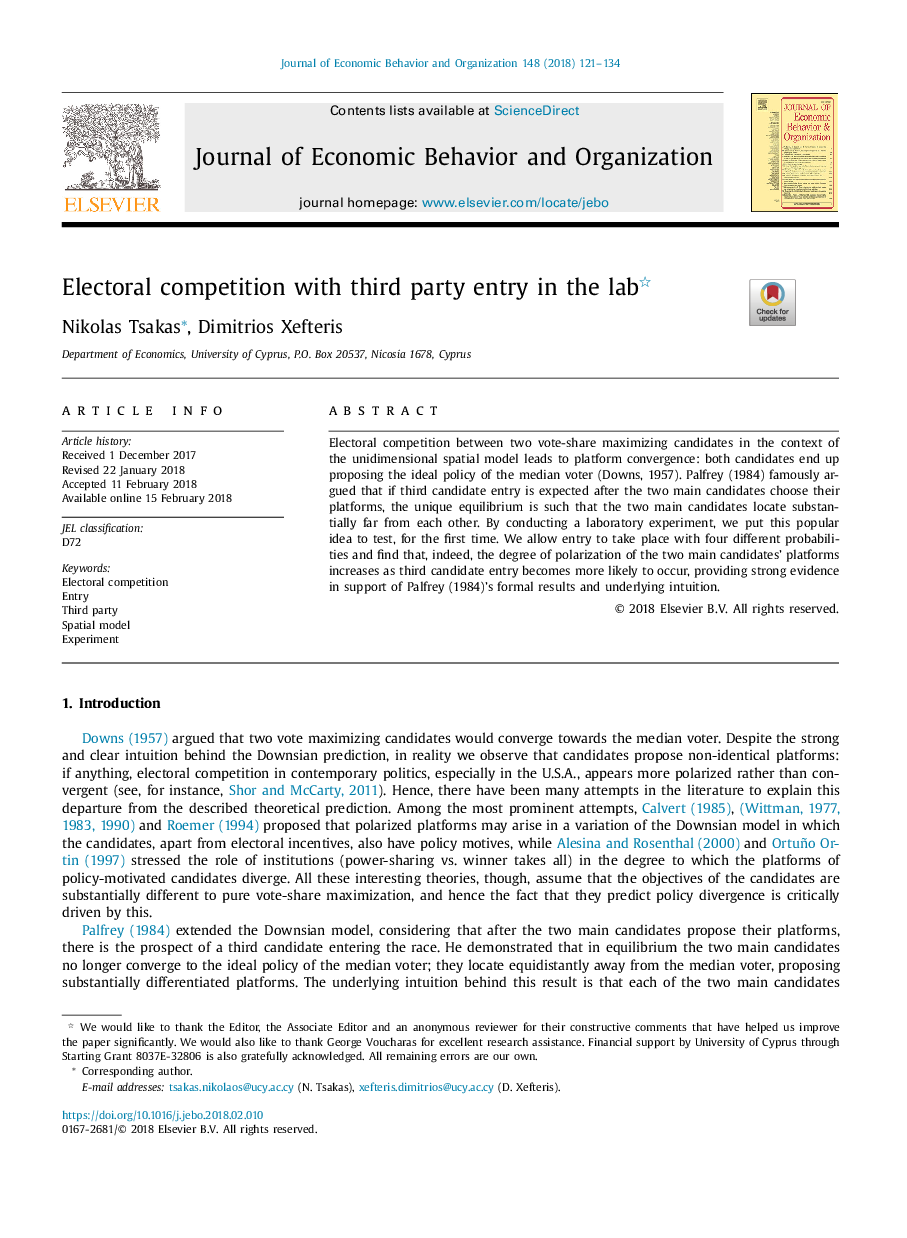| Article ID | Journal | Published Year | Pages | File Type |
|---|---|---|---|---|
| 7242612 | Journal of Economic Behavior & Organization | 2018 | 14 Pages |
Abstract
Electoral competition between two vote-share maximizing candidates in the context of the unidimensional spatial model leads to platform convergence: both candidates end up proposing the ideal policy of the median voter (Downs, 1957). Palfrey (1984) famously argued that if third candidate entry is expected after the two main candidates choose their platforms, the unique equilibrium is such that the two main candidates locate substantially far from each other. By conducting a laboratory experiment, we put this popular idea to test, for the first time. We allow entry to take place with four different probabilities and find that, indeed, the degree of polarization of the two main candidates' platforms increases as third candidate entry becomes more likely to occur, providing strong evidence in support of Palfrey (1984)'s formal results and underlying intuition.
Related Topics
Social Sciences and Humanities
Economics, Econometrics and Finance
Economics and Econometrics
Authors
Nikolas Tsakas, Dimitrios Xefteris,
